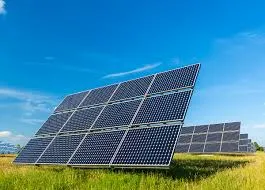Exploring the Maximum Theoretical Efficiency of Solar Panels for Optimal Renewable Energy Harnessing
Maximum Theoretical Efficiency of Solar Panels
The quest for sustainable energy solutions has led to the increasing adoption of solar panels across the globe. As technology advances, the efficiency of these panels becomes an essential topic of discussion among researchers, manufacturers, and consumers. The maximum theoretical efficiency of solar panels represents the upper limit of energy conversion from sunlight to electricity, fundamentally influencing the viability of solar energy as a sustainable resource. This article explores the concept of maximum theoretical efficiency, the principles behind it, and the implications for solar energy technology.
To begin with, the maximum theoretical efficiency is determined by several factors, including the properties of sunlight and the materials used in solar cell construction. According to the Shockley-Queisser limit, which is a well-known theoretical framework, the maximum efficiency for a single-junction solar cell under standard illumination conditions is approximately 33.7%. This limit takes into account the spectrum of sunlight and the electrical characteristics of semiconductor materials. However, various innovative approaches can push this boundary even further.
One of the key components influencing solar panel efficiency is the material used for photovoltaic conversion. Traditional silicon-based solar cells dominate the market; however, they have their limitations. Alternative materials, such as perovskites, have emerged as potential game-changers. With exceptional light absorption properties and the ability to be produced at a lower cost, perovskite solar cells can reach efficiencies of over 25% in laboratory settings. Researchers are optimistic that, with ongoing advancements, these materials could approach or even exceed the Shockley-Queisser limit when used in tandem with other technologies.
maximum theoretical efficiency of solar panels

Multijunction solar cells are another promising avenue for increasing maximum theoretical efficiency. By stacking multiple layers of semiconductor materials that capture different parts of the solar spectrum, multijunction cells can surpass the limits set by single-junction cells. These cells can theoretically achieve efficiencies of around 45%, making them an attractive option for applications requiring high efficiency in smaller areas, such as space missions or high-performance solar farms.
Moreover, the concept of light management plays a crucial role in maximizing the efficiency of solar panels. Techniques such as light trapping and anti-reflective coatings can enhance the amount of light absorbed by the photovoltaic material, thereby increasing energy conversion efficiency. Innovations in nanotechnology have also led to breakthroughs in how light interacts with solar panels, enabling better performance under various conditions, including low-light environments.
Beyond the technical aspects, achieving maximum theoretical efficiency also involves addressing practical challenges. Factors such as manufacturing costs, longevity, environmental impacts, and scalability must be considered. For instance, while perovskite cells show high efficiency in controlled laboratory conditions, their stability and durability in real-world applications remain under scrutiny. Achieving commercial viability requires addressing these issues without compromising performance.
In conclusion, the maximum theoretical efficiency of solar panels is a critical factor that shapes the future of solar energy technology. Innovative materials like perovskites and advanced designs like multijunction cells provide exciting possibilities to break through existing efficiency barriers. However, translating these theoretical advancements into practical, durable, and cost-effective solutions remains a challenge. As we continue to explore these avenues, the potential for solar energy to play a significant role in our global energy landscape becomes increasingly promising. The pursuit of maximizing efficiency not only enhances the effectiveness of solar technology but also paves the way for a more sustainable and environmentally friendly future.
-
Unlocking Energy Freedom with the Off Grid Solar InverterNewsJun.06,2025
-
Unlock More Solar Power with a High-Efficiency Bifacial Solar PanelNewsJun.06,2025
-
Power Your Future with High-Efficiency Monocrystalline Solar PanelsNewsJun.06,2025
-
Next-Gen Solar Power Starts with Micro Solar InvertersNewsJun.06,2025
-
Harnessing Peak Efficiency with the On Grid Solar InverterNewsJun.06,2025
-
Discover Unmatched Efficiency with the Latest String Solar InverterNewsJun.06,2025







